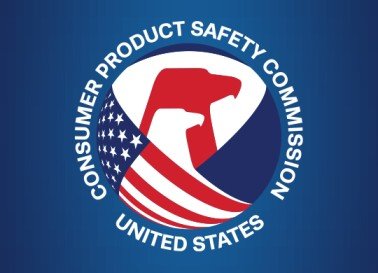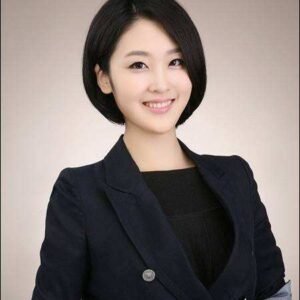
I. Introduction
Importing student backpacks requires strict adherence to safety standards to safeguard the well-being of the end-users. By meeting safety guidelines, hazards like flammable materials, sharp objects, and choking risks can be avoided, ensuring students are protected. Adhering to safety standards also helps foster trust and transparency with customers, who can rest easy knowing they’ve purchased products that abide by established safety regulations. Failure to follow safety standards can lead to dire legal and financial ramifications, including recalls, fines, and a tarnished reputation. Prioritizing safety standards during the procurement process establishes a more effective and sustainable business model.
II. Safety standards for student backpacks in the US

When exporting backpacks to the United States, it is important to ensure compliance with several safety standards and regulations. The Consumer Product Safety Commission (CPSC) and the Consumer Product Safety Improvement Act (CPSIA) are two crucial regulations that manufacturers and exporters need to consider. The CPSC sets guidelines for the safety of consumer products in the United States, including backpacks. The CPSIA, on the other hand, requires that all children’s products, including backpacks, meet certain safety requirements, such as limits on lead content and phthalates. Additionally, the California Proposition 65, also known as CA65, sets standards for chemicals and substances that may be harmful and requires warning labels for products that contain these chemicals.
To export backpacks to the US, manufacturers and exporters need to ensure that their products meet these standards and regulations. They may need to perform testing to confirm compliance, and they may also need to obtain appropriate certifications. Failure to comply with these regulations can result in fines and penalties, as well as damage to a company’s reputation. It is essential to work with experienced and knowledgeable suppliers and partners to ensure that products meet all applicable safety standards and regulations.
III. Safety standards for student backpacks in the EU

When exporting student backpacks to the European Union (EU), it is important to ensure that they comply with relevant safety standards and regulations. Two of the most important standards for student backpacks in the EU are EN-71 and REACH.
EN-71 is a set of European safety standards that apply to all toys sold in the EU, including backpacks that are marketed to children. This standard sets requirements for mechanical and physical properties, flammability, and chemical properties, among others. Compliance with EN-71 ensures that student backpacks sold in the EU are safe for children to use.
REACH is a regulation established by the European Chemicals Agency (ECHA) that governs the use of chemicals in products sold in the EU. It requires manufacturers to identify and manage the risks associated with the use of chemicals and to communicate this information to downstream users. Compliance with REACH ensures that student backpacks sold in the EU do not contain hazardous chemicals that could harm consumers or the environment.
In summary, compliance with EN-71 and REACH is crucial for anyone exporting student backpacks to the EU. By meeting these standards, importers can ensure that their products are safe, environmentally friendly, and legally compliant.
IV. Other basic global standards

- Phthalate-free standard: Phthalates are a group of chemicals that are commonly used to soften plastics, but they can be harmful to human health. Some countries, such as the United States, Canada, and the European Union, have strict regulations on the use of phthalates in consumer products, including backpacks.
- Low azo dyes: Azo dyes are synthetic colorants used in textiles and leather goods, and some azo dyes may break down into aromatic amines, which are known to be carcinogenic. Therefore, various countries have established regulations to limit the use of certain azo dyes in products, including backpacks.
- Low cadmium standard: Cadmium is a toxic heavy metal that can cause serious health problems. Some countries, such as the European Union, have strict regulations on the amount of cadmium that can be present in consumer products.
- Heavy metal standard: Some countries, such as Japan, have strict regulations on the amount of heavy metals (such as lead, mercury, and chromium) that can be present in consumer products.
- Flammability standard: Backpacks, like all textiles, can be a fire hazard if they catch fire. Some countries, such as the United States, have strict flammability standards for textiles and consumer products.
V. Key considerations for buyers when importing student backpacks

Potential risks and challenges that buyers may face
Importing student backpacks can be a complex process with potential risks and challenges for buyers. Safety and quality of the products are primary concerns as non-compliance with safety standards poses a risk to the end-users, leading to potential lawsuits and reputational damage for the buyer. Ensuring suppliers adhere to safety standards and regulations can be particularly challenging for buyers that source products from countries with weaker standards.
Counterfeit products present another obstacle as some suppliers manufacture backpacks that have the same appearance as genuine products but do not adhere to safety standards. Buyers must perform due diligence to avoid such products. The logistics of importing and exporting goods, such as customs clearance and transportation, can also be challenging. Buyers must understand customs regulations and requirements in the destination country to avoid disruptions and extra costs.
Intellectual property (IP) rights also pose challenges to buyers. The design of backpacks may be protected by patents, trademarks, or copyrights. Buyers must ensure that they comply with these rights, and if they have created their own designs, protect their own IP.
Buyers must consider potential risks and challenges when importing student backpacks. They should ensure that they comply with safety standards, avoid counterfeit products, understand customs regulations, and protect IP rights. By taking the necessary precautions, buyers can overcome these obstacles and import student backpacks successfully.

Tips on how to ensure compliance with safety standards and avoid common pitfalls
- Research safety standards: It’s crucial to research the safety standards and regulations of the destination country before importing. This will help to identify the relevant safety standards that the backpacks must comply with, and avoid any potential issues.
- Choose reputable suppliers: Select suppliers with a good reputation and a history of producing compliant products. Conducting thorough background checks and requesting compliance certificates from suppliers can help to ensure that the backpacks meet safety standards.
- Inspect products: Conduct product inspections before shipping to ensure that the backpacks comply with safety standards. This can be done by hiring a third-party inspection company or conducting the inspection yourself.
- Keep records: Keep records of all compliance documents, including test reports and certificates. This will help to ensure that the backpacks meet safety standards and provide evidence of compliance if needed.
- Stay up-to-date: Stay up-to-date with the latest safety standards and regulations in the destination country. This will help to ensure that the backpacks continue to comply with safety standards and avoid any potential issues in the future.
VI. Conclusion
When sourcing student backpacks, it’s important to prioritize safety and quality. By doing so, you can not only protect your customers, but also avoid potential legal and financial liabilities. Make sure to research and understand the safety standards and regulations that apply to your specific market, whether it be the US or the EU. Work closely with your suppliers to ensure that their products meet these standards and request relevant documentation and testing reports to verify compliance. Don’t compromise on safety and quality for the sake of cost, and always put the safety of end-users first. By taking these steps, you can ensure that you are providing safe and high-quality products to your customers, and protecting your business in the process.


